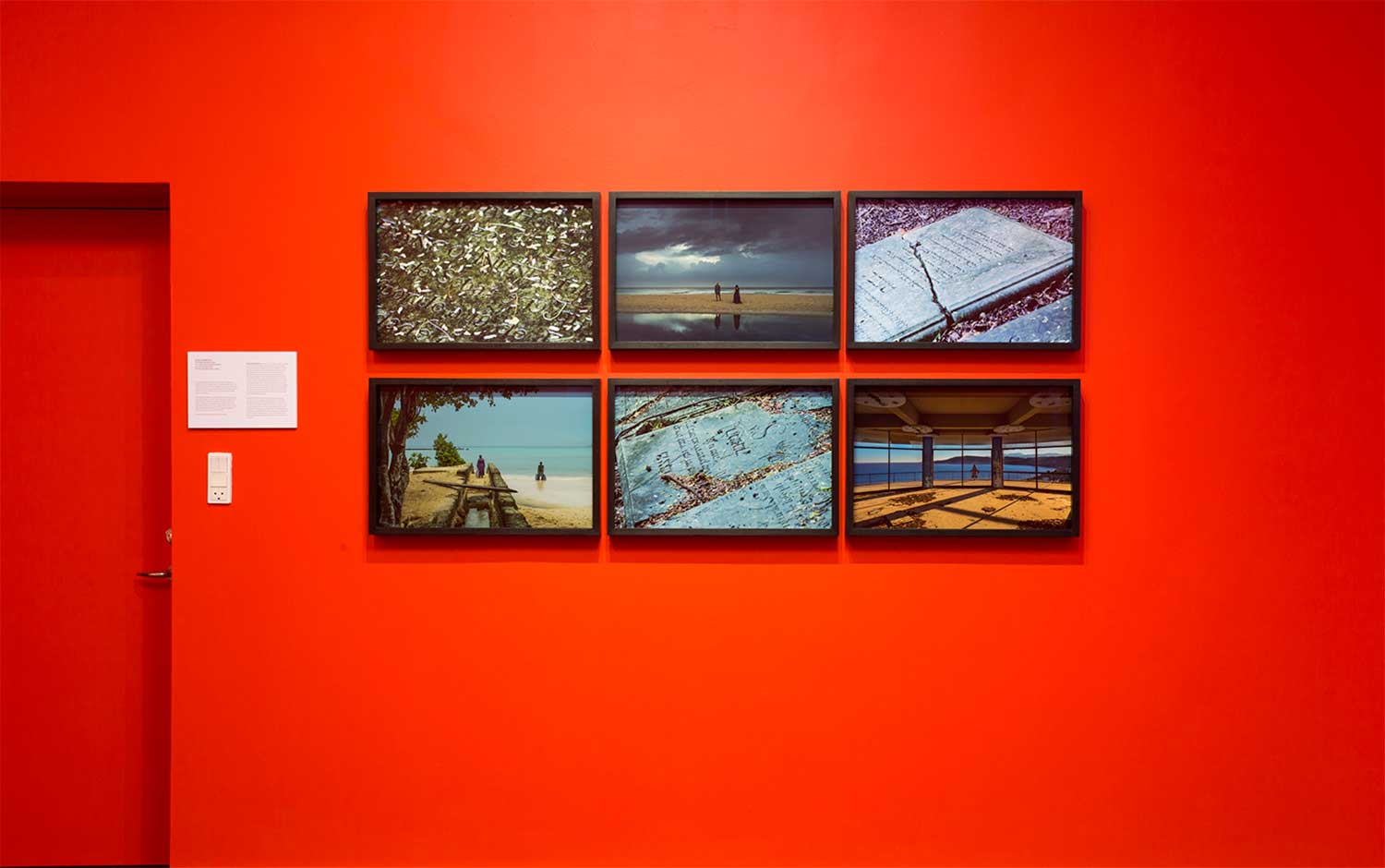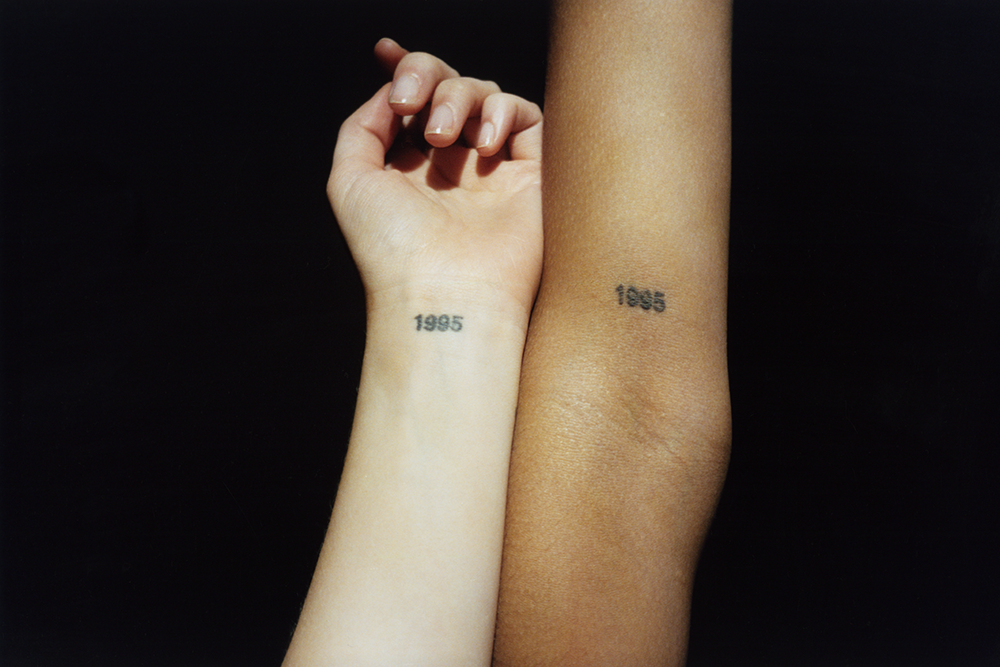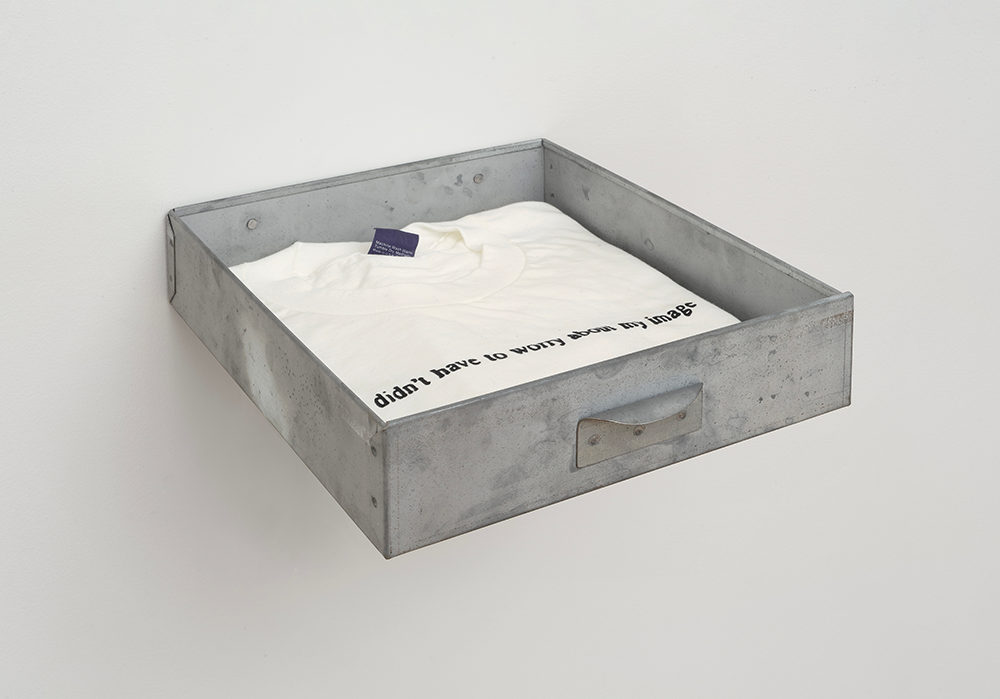
Around 1968 Raul Guerrero purchased a Yaqui ceremonial mask from a dealer in indigenous artifacts (and purported warlock) working out of an apartment in the McArthur Park neighborhood of Los Angeles. Guerrero, then a student at the Chouinard Art Institute, was under the impression that his grandfather had been Yaqui, and he saw the mask as a kind of personal curio. A carved wooden human face painted black, its features are simplified and exaggerated: a wide sharp nose, fanning ears, teeth that jut down into a parted mouth, and a pair of twisted goat horns that splay upward from the forehead. In 1973, now working under a Duchampian influence and a reading diet of Carl Jung, Lévi-Strauss, and Margaret Mead, Guerrero returned to the mask, considering it in relationship to archetypes, primary images, and the readymade. He remembers reading a passage in Foundations of Modern Art in which Amédée Ozenfant argues that the removal of native artifacts from their original context depletes them of their significance. Guerrero took the mask, rigged it up with a motor and a foot pedal, and affixed it to the wall; stepping on the pedal sets the mask spinning at fifteen rotations per minute.
Rotating Yaqui Mask offers a corrective to Ozenfant: the meaning of an object is always in motion, turned upside down and sideways, made and remade again. As an experiment in reanimation it is droll and weirdly beautiful, but there is also something plaintive in these steady revolutions and mechanical whir. The motor, too, is a simple artifact of its moment, no less archetypal for being unseen. The mask and the motor — they measure a distance, spatial and temporal, a span characterized, of course, by violence but equally by the ceaseless transformation and hybridization of cultures. The vagaries of history and geography dramatized by Rotating Yaqui Mask have marked a recurrent theme in Guerrero’s thinking and artmaking over more than four decades — history, that is, as a process of perpetual revision, place as always mediated by narrative, imagery, myth, and imagination.
In conversations with Guerrero, this sense of place and past is palpable. He recounts his family history and his development as an artist almost as a sequence of points on a map, a geo-narrative stretching from Chihuahua and Sonora through Southern California to Europe and back, across several neighborhoods in Los Angeles, and filtered through references to history, books, films, and art — as much a consideration of the idea of each location as of his experiences there. The grandson of immigrants from Mexico, Guerrero was born in 1945 in Blythe, California, in the Palo Verde Valley, a farming region beside the Colorado River in the desert between Los Angeles and Phoenix. His father would drive workers to and from the fields, a kind of lower managerial role in the local agricultural economy. When school ended each year, they would load up a flatbed truck and drive north to the San Joaquin Valley to work the summer season: a childhood tracing a line up and down California’s breadbasket interior, a world apart from the emerging popular mythology of the state. When Guerrero was eleven, the family moved to National City, a working-class suburb south of San Diego. There his father worked construction, and his mother opened a hair salon, launching the family into the middle class. In National City Guerrero encountered a world of surfing, car culture, and hamburgers from Jack in the Box, set to a soundtrack by Rosie and the Originals. The timbre of the place was equally determined by its proximity to the border, with Tijuana just minutes away. This zone of cultural crosscurrents was encapsulated in the treasures proffered by Mexican kitsch artisans: velvet paintings, plaster of Paris casts of The Last Supper. “That was our Metropolitan Museum,” he says.

Guerrero speaks of the effect of border life on one’s perception of the world, proposing a particular attention to the ways images travel and their meanings shift in transit, a sensibility he sees exemplified in the work of John Baldessari, also from National City, with whom Guerrero studied during a stint at Southwestern College in San Diego in 1964. In his own work, we glimpse this interest in border-crossing not only in the frequent depictions of places he’s traveled — Tijuana, Oaxaca, Morocco, Berlin — but also, significantly, those he hasn’t. Vuelo Mundial (1976) is a three-minute film comprised of a found photograph of a DC-7 airplane in flight and a soundtrack of the groaning piston engine of a DC-7, purchased from a Hollywood sound library. Every few seconds the Spanish name of a city appears on screen — Tokio, Singapur, El Cairo — charting a six-hundred-mile-per-hour journey from Honolulu east to Los Angeles. A roaring, frozen animation of a flight at nearly twice the speed of sound, Vuelo Mundial gently picks apart the magic of Hollywood, collapsing movement and stasis, the iconic and the generic. Does the plane mean the same thing over Katmandu as Ho Chi Minh City? Would it mean the same in English?
In 1966 Guerrero began his studies at Chouinard and would spend the next decade and a half in Los Angeles, working predominantly in photography, sculpture, and installation, at home in a group of conceptually oriented artists — including friends Jack Goldstein, Allen Ruppersberg, and William Leavitt — who, like Guerrero, were interested in narrative, processes of signification, and the idea of California. In a tone cool and effusive, he reels off anecdotes. He tells me how Goldstein walked into class the first day at Chouinard looking like Paul McCartney, and how he told Guerrero that all these bands wanted him to be their front man. There are stories from the Pacific Building in Santa Monica, where Guerrero lived in the mid-1970s and where Goldstein, Ruppersberg, James Welling, John Miller, and the Kipper Kids had apartments or studios, and the bar downstairs where he would drink with Guy de Cointet and whose owners, he says, were funneling money to the IRA.

As it did for many of these artists, Los Angeles — home of the culture industry and already-faltering fantasies of the boom years — made a rich subject for Guerrero in the 1970s, appearing sometimes in his work as a dreamscape of mediation and cliché. Take, for example, a couple of composite photographs: there is deadpan humor to the simple sci-fi effects of U.F.O.L.A. (1973), in which he inserted a flying saucer made of hubcaps into the sky above the construction sites of Grand Avenue, and Menu of the Future (1976), where he added a “2” to the price of each item on the menu at a Santa Monica coffee shop. Notwithstanding the dystopian vision of a twenty-one-dollar tuna sandwich, these works satirize California’s mythology of progress while historicizing the present (U.F.O.L.A. documents the ongoing urban renewal project on the ashes of the working-class neighborhood of Bunker Hill). One can hear echoes of, say, Ruppersberg’s Greetings from L.A. (1972) or Leavitt’s tableaux in Guerrero’s presentation of the city with a mingling of fact and fiction, the banal and the strange. But whereas Leavitt’s and Ruppersberg’s interest in a Southern California vernacular focused on popular and material culture or the region’s built environment, Guerrero, in a work like Four Obscene Hand Gestures with Spanish Translations (1973), approaches the subject, if you will, through a different neighborhood. A set of photograms of the artist’s hands performing insults from the repertoire of Mexican-American gestural slang, each accompanied by a caption — mamame la verga, chinga tu madre — Four Obscene Hand Gestures, from the perspective of an anglophone audience, leaves the translations “half-translated.” Art’s extraction and application of vernacular material relies on the assumption that the viewer can adequately decode these things. Highlighting the workings and limits of these assumptions, Guerrero grafts elements of a Chicano vernacular onto a spoof of assumptions from an earlier age — the hand of the artist and the gesture as a mark into which we read meaning.
Guerrero’s exhibition history from these years looks not unlike those of his Pacific Building colleagues, all still in the early phases of their careers, including shows at Cirrus Gallery, the Long Beach Museum of Art, and the Los Angeles Institute of Contemporary Art, then the city’s premiere venue for experimental art. His resume then diverges from theirs — quite of few of his friends going on to achieve financial and critical success in varying measures. Though Guerrero has continued to exhibit when he can, it has generally been at out-of-view venues, often around San Diego, where he has lived since 1980. Even as that period in Los Angeles art, in particular the group of artists of which he was a part, has become a subject of increasing art-historical interest, these accounts typically exclude Guerrero. Though he doesn’t dwell on it, the question of this divergence and exclusion is unavoidable, as is the conclusion that, at least in part, it has to do with the experiences and subject position that inflect his art. Or perhaps the ways that they inflect it. If a Chicano conceptualism (a term that anyway only captures a portion of his output from the 1970s) was a tough sell in its own right, the irony, playfulness, even capriciousness in Guerrero’s work made it altogether unmanageable, out of step as well with the expectations of what would come to be enshrined under the banner of identity politics.

Since the mid-1980s Guerrero has worked predominantly in painting. It’s a postmodern medley of styles, historical pastiche, kitsch indulgences, and freely appropriated imagery —Velázquez, Mexican cinema, George Catlin’s nineteenth-century portraits of Plains Indians. At first, he often worked within the scope of discreet and defined series. In the Oaxaca paintings, from 1985, he draws both from Surrealism and colonial Mexican painting to create a night world of jungle scenes, a pre-Columbian fantasia. The strippers and bars in the series “Aspects of the Nightlife in Tijuana” (1991) Guerrero renders in a florid decorative manner reminiscent of Raoul Dufy. Then, in 1991 he inaugurated a project that was supposed to take three years to complete. He is still working on it today. Titled Los problemas y secretos maravillosos de las indias — a title borrowed from Juan de Cárdenas’s sprawling 1591 study of the New World — Guerrero’s project is concerned with nothing less than the history of the Americas from the conquest to the present. Not so much a series as a series of series, the problemas y secretos offers a parallax history focused on three regions of unequal sizes — the Great Plains, Latin America, and Southern California. It’s a long, lopsided triangle that provides a frame for the restlessness and exuberance of Guerrero’s painting as he works out the endless variations on a historical narrative comprised of quotation and illustration — from the chronicles of the Spanish to accounts of CIA treachery in Latin America. For the history of the continent is, for Guerrero, the history of the ways — and vantages from which — that story gets told and retold.
The first time I visited Guerrero at his studio, two years ago, The Battle of Cajamarca (2016) was displayed on the floor: a group of maybe a dozen coconuts — a few real, the others cast in resin and painted — with craved faces and inset marbles for eyes. Staring up with a dead gaze from those quaint children’s toys, the heads lay upon an overlapping collection of Native American textiles and rugs. The title refers to the key event in the Spanish conquest of Peru in 1532. Guerrero employs the canonical name, though it was not so much a battle as the ambush and kidnapping of the Inca ruler, Atahualpa, and the slaughter of his largely unarmed retinue by Francisco Pizarro and a gang of conquistadors. Pizzaro’s deeds — like those of Cortez in Mexico a decade prior — seized the European imagination, in turn glorified over the coming centuries in texts, engravings, and paintings, a repetition mirrored, in a sense, in a dissenting account, in which the conquest — or genocide if you prefer — is revisited as a kind of originary trauma. With the cartoonish violence of those glinting-eyed coconut heads, Guerrero’s version is less a retelling than a consideration of the process of retelling, of mythmaking. His decapitated tableau unsteadies its nominal subject, mischievously combining geographically far-flung elements into a continental pastiche: the rugs are not exclusively Peruvian, but rather drawn from all over the Americas — Ecuador, Mexico, the United States. And like the coconuts, the rugs are a combination of “authentic” and “ersatz” — many of them tourist schlock. And anyway, they don’t grow coconuts in Cajamarca.




